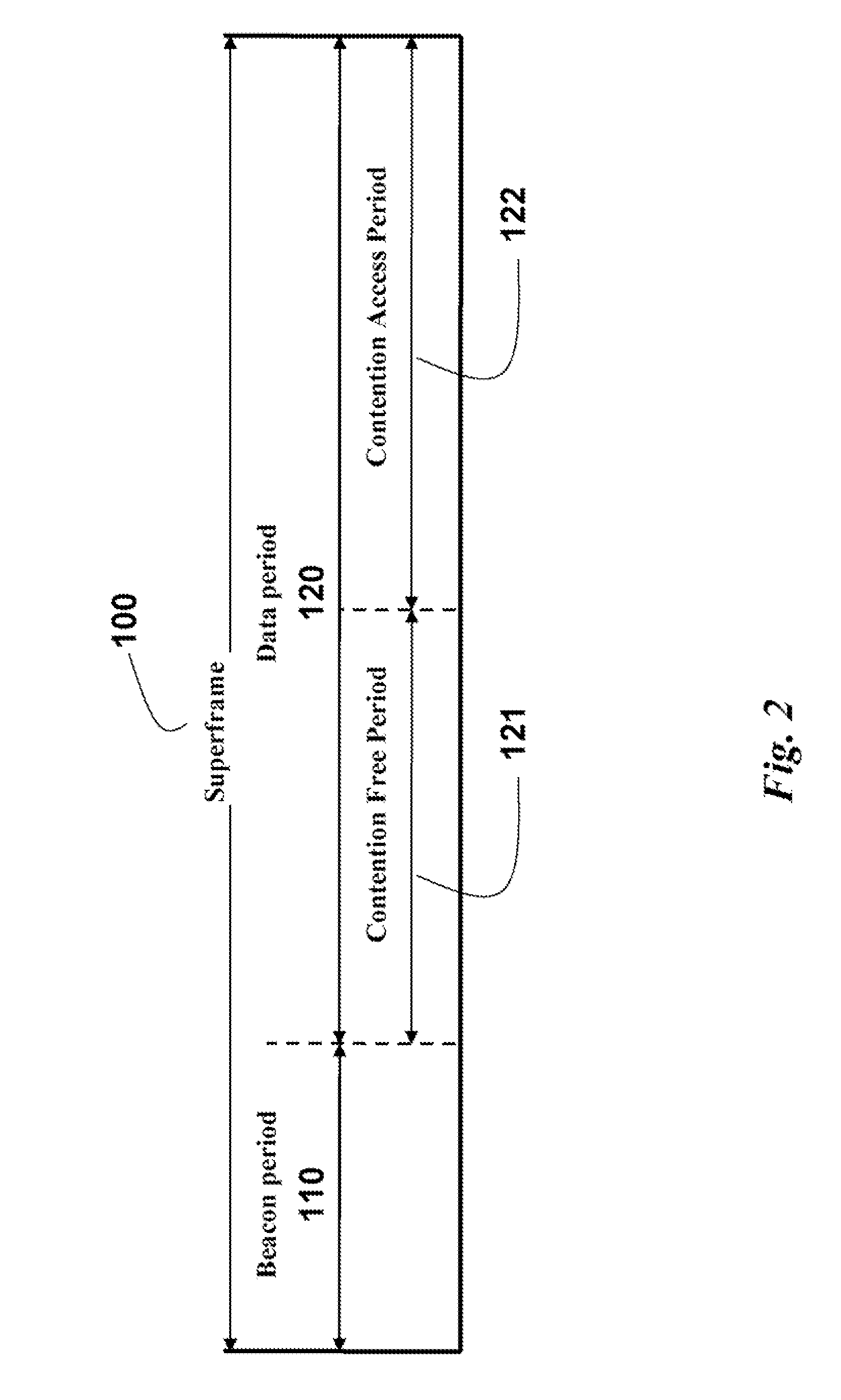Timeslot Sharing Protocol for Wireless Communication Networks
a wireless communication and timeslot sharing technology, applied in the field of communication networks, can solve the problems of increasing overhead, reducing power consumption and cost, etc., and achieve the effects of reducing power consumption in the network, improving network utilization efficiency and data throughput, and increasing the maximum number of nodes allowed to participa
- Summary
- Abstract
- Description
- Claims
- Application Information
AI Technical Summary
Benefits of technology
Problems solved by technology
Method used
Image
Examples
Embodiment Construction
[0037]Wireless Network of Nodes
[0038]FIG. 1 shows a wireless network according to an embodiment of the invention. The network includes transceivers (nodes) 10-11, and each node includes a transmitter (Tx) and a receiver (Rx), which form a transceiver. The nodes communicate data 12 with each other during superframes 100 using a shared media, i.e., a common wireless channel.
[0039]In an example of a controlled or managed network, one of the nodes 11 can be designated as a coordinator node. Although not required, the coordinator node can manage network synchronization and resource allocation, such as the timeslot according to the embodiment of the invention described below. In general, the network management can be ad hoc, distributed, or central.
[0040]A node can be designated as the coordinator on the following basis: a node is arbitrarily chosen; the node is the first to join (or start) a network; a node designated as a backup coordinator becomes the designator in the event the origin...
PUM
 Login to View More
Login to View More Abstract
Description
Claims
Application Information
 Login to View More
Login to View More - R&D Engineer
- R&D Manager
- IP Professional
- Industry Leading Data Capabilities
- Powerful AI technology
- Patent DNA Extraction
Browse by: Latest US Patents, China's latest patents, Technical Efficacy Thesaurus, Application Domain, Technology Topic, Popular Technical Reports.
© 2024 PatSnap. All rights reserved.Legal|Privacy policy|Modern Slavery Act Transparency Statement|Sitemap|About US| Contact US: help@patsnap.com










